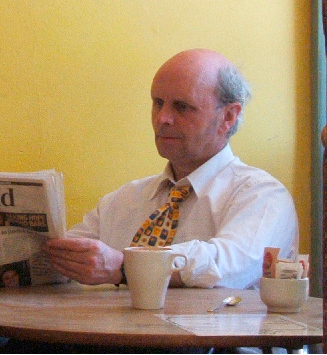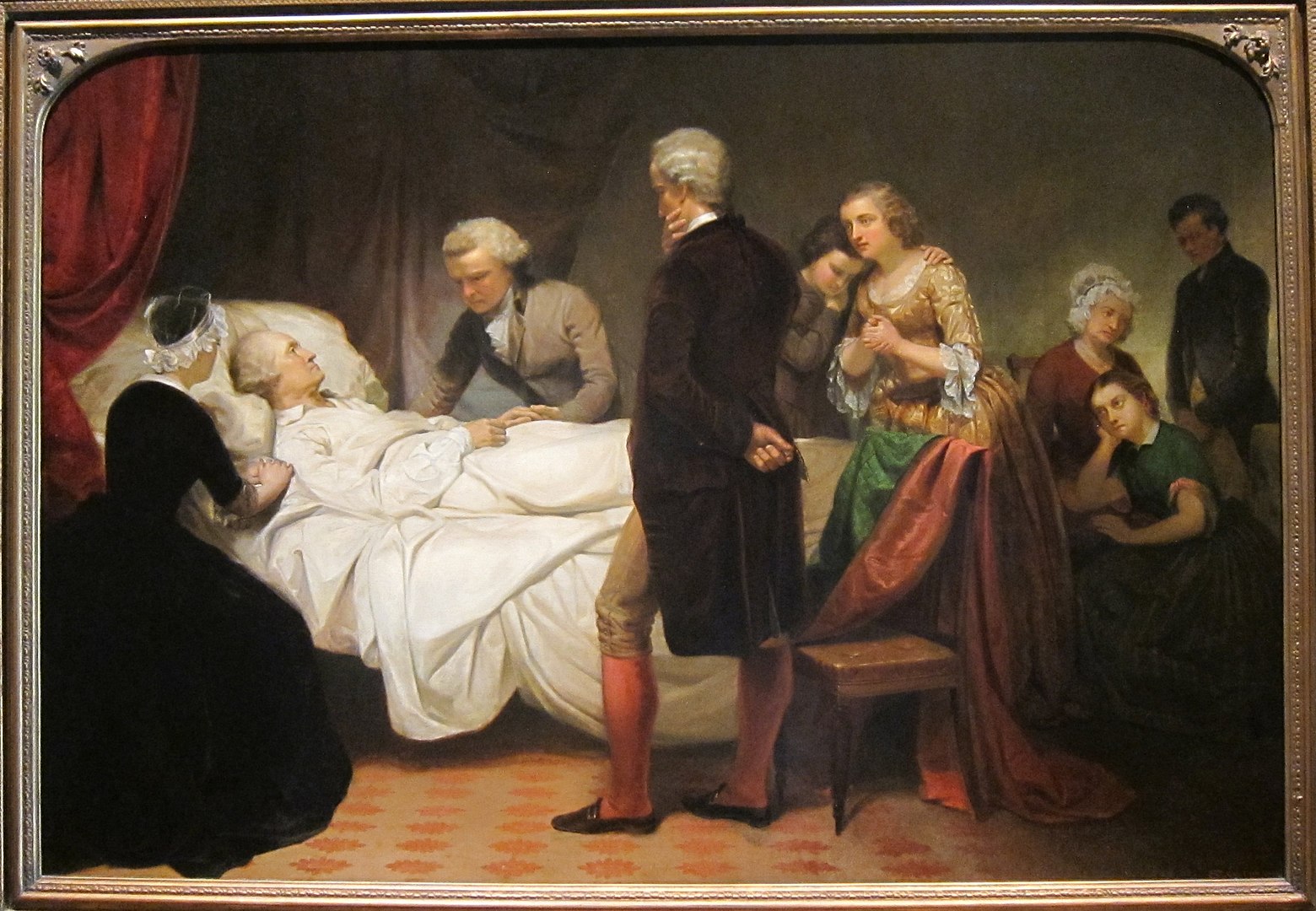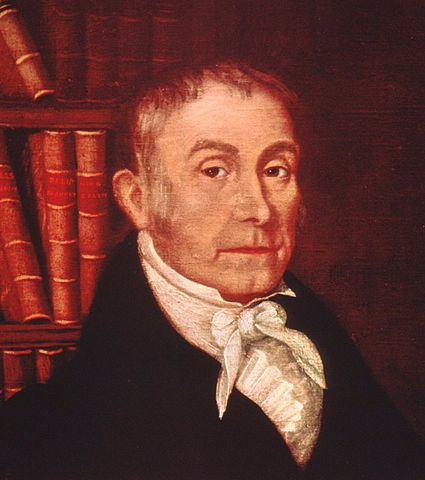Orthodoxy on trial I: the pathogenesis of a diagnosis

David J Black
David J Black explores the dangers of orthodoxy in the first in a four-part medico-legal series.
“Orthodoxy” wrote Bertrand Russell “is the death of intelligence”. Before placing this in a medico-legal context with specific reference to the 2009 case Fraser and another v The National Institute of Clinical Health and Excellence, consider the quandary of three anxious doctors gathered around the bed of a dangerously ill 67-year-old man fighting what appeared to be a severe attack of croup.
Two of the doctors were roughly his age. The third doctor, who was in his mid-thirties, had an inspired, if unorthodox, idea. With a simple tracheotomy procedure, the inflammation blocking the windpipe could be bypassed, and the patient might be saved. The problem was that it was December 1799, and the patient was George Washington, the nearest thing the secular United States had to a deity. Cutting his throat may well have saved his life, but the outcome, had the operation gone wrong, would not have been such a good one for the three Scots-American physicians concerned.
In the event Surgeon-General William Craik, the President’s brother-in-arms who had known him all his adult life, and Doctor Gustavus Brown, his neighbour from the other side of the Chesapeake, over-ruled Dr Elisha Cullen Dick of Alexandria, whom they clearly regarded as their junior.

Washington on his Deathbed (1799), Junius Brutus Stearns
They chose instead the route of 18th century orthodoxy, bloodletting and purging, with a few extras such as molasses, vinegar and butter gargles, and throat swabs made from a preparation of dried beetles. George Washington, minus around 40 per cent of his blood, was dead within a few hours, the victim of that very same medical orthodoxy.
Almost exactly 10 years later to the day Dr Ephraim McDowell, an alumnus of Edinburgh University Medical School, had to confront a similar dichotomy. A woman by the name of Jane Crawford who, it was believed, was pregnant, had overshot her term, and was in agony.
On examination, McDowell found that she wasn’t pregnant at all but had a massive ovarian tumour, and if she wasn’t operated on in short order she would die horribly. Ephraim McDowell now had a major problem. No one had ever carried out such a procedure before so the risk of failure was extremely high. He was going to have to do something dangerously unorthodox.
The patient was desperate to be operated upon, and the surgeon was not only willing to carry it out, but felt it was his moral duty, rather like Dr James Young Simpson when Queen Victoria commanded him to administer his novel chloroform anaesthetic during a difficult childbirth, to the horror and consternation of the royal physicians and The Lancet.
McDowell felt obliged to proceed, but this was Danville, Kentucky, in 1809, and there were others who didn’t share this view. Some were aghast at the thought of ornery folks being cut open like watermelons, others felt the doctor was flouting the will of God, which was evidently that Ms Crawford should die in agony – perhaps as a punishment for once doing something really bad.

Dr Ephraim McDowell
To help focus the doctor’s mind, they slung a noosed rope over the branch of a tree, and while it was swinging in the breeze Dr McDowell wrote out a heartfelt prayer, then scrubbed his hands and carried on with the world’s first ever ovariotomy. He removed a tumour weighing in at 22.5 lbs, and sewed the lady up. Luck was with him. She recovered, and lived for a further 32 years.
Ephraim McDowell had breached an orthodoxy, and got away with it, ending up not with a noose around his neck but with a statue in the Capitol and his own US postage stamp. Had he failed, that particular operation would have clocked up a 200 per cent morbidity factor.
These colourful tales have very little in common with the case to be addressed, you might think, but the common theme here is that they invite us to consider the nature of orthodoxy, and to test Bertrand Russell’s dictum about it being the death of intelligence in our present era.
The first question to ask of any orthodoxy is, of course, “says who?” In the following example, the answer is psychiatrists Colin McEvedy and Bill Beard, who in 1970 published “A Concept of Benign Myalgic Encephalomyelitis” in The British Medical Journal. This became the founding doctrine of what might be termed the ‘psychogenic model’ for the study and understanding of a debilitating illness widely known as Chronic Fatigue Syndrome. As an orthodoxy the psychogenic model would hold sway for half a century, until it was finally discredited in November 2020, as we shall see.
McEvedy and Beard’s starting point was the 1955 ME/CFS epidemic in London’s Royal Free Hospital. This affected 292 individuals, 198 of them health workers. After reviewing 15 cases, while only studying clinical data from one, and interviewing precisely no patients, the authors concluded ‘that a lot of these epidemics were psychosocial phenomena caused by - either mass hysteria on the part of the patients or altered medical perception of the community.’
In their five-page paper, with a further four pages of “reconsideration”, they cited a detailed 90-page report on a 1934 outbreak in Los Angeles County Hospital by Dr Alexander Gilliam, a senior surgeon and epidemiologist of the US Health Service, who had in fact concluded: “It would be manifestly erroneous to consider as hysteria the emotional instability associated with this illness.” Gilliam had no doubt whatsoever that the condition had an organic origin.
In his view, the Los Angeles outbreak had a viral trigger, but McEvedy and Beard had a better idea. Their study might be only a tenth as long as Gilliam’s investigative report, but they were happy to disregard him, and they had an eager following – other psychiatrists. “With Royal Free disease”, the pair trumpeted, “there is little evidence of an organic disease affecting the central nervous system – epidemic hysteria is a much more likely explanation”.
They rejected biomedical arguments, placing “the onus on the organicist to prove that the condition is not hysterical” and adding that their own findings “fit so readily into the hysterical hypothesis that an organic theory seems worth considering only if other evidence can be brought in to support it”.
Of 198 staff affected in the Royal Free outbreak, 193 were women. The authors conceded that “the diagnosis of hysteria in its epidemic form is not a slur on either the individuals or the institution concerned” albeit in a group which “consists predominantly of young females”.
Although their proposed new classification Myalgia Nervosa would never be adopted, their core hypothesis that ME/CFS was all in the patient’s head, particularly if the patient was young and female, was eagerly seized upon. The medical equivalent of a land grab was underway.
The overarching theme that ME/CFS was psychiatric in character and their doctrinal shibboleth that the Royal Free Hospital outbreak was “an hysterical phenomenon” would be widely extrapolated and applied to the diagnosis and treatment of ME/CFS generally.
Elevated to the status of an orthodoxy, it followed that those disagreeing with the psychogenic model were likely to be castigated as heretics and dealt with accordingly. Thus, when Panorama broadcast an investigation into ME/CFS, Sick and Tired, in 1999, one leading psychogenicist issued a call to arms: “It’s about time the (medical) profession hit back at those who are vilifying our colleagues.” The BBC and the Broadcasting Standards Commission crumpled under the pressure.
An attack-dog approach to critics of the orthodoxy became the default setting of McEvedy and Beard’s latter day adherents. In 2003 consultant haematologist Margaret Cook wrote a damning article on the psychogenic model in The Scotsman. Roundly vilified for criticising a psychiatric lobby which, she claimed, had “downplayed the need for research into diagnostic markers for the condition(s) – and had cut state funding to other areas of research”, she was sacked as a columnist.

Glasgow University
There was certainly emerging evidence for her last contention. A Glasgow University team under the neurologist Professor Peter Behan who, with virologist Professor John Gow and others, had mapped 33,000 genes in ME/CFS sufferers and compared them with the genes of healthy people discovered an ‘unusual gene presentation’ in the CFS cohort. Then, in 2005, the Scottish Enterprise Council withdrew its funding. Dr Gow stated that, as a result, his research was “going nowhere”.
The Scottish journalist Charles Mackay, in his book Extraordinary Popular Delusions and the Madness of Crowds, was possibly ahead of his time in stating “the wonderful influence of imagination in the cure of diseases is well known”. He was writing of mesmerism, but with the psychogenic dominance of the diagnosis and treatment of ME/CFS, and its recent critical re-appraisal, a comparison clearly merits a sideways glance.
David J Black is an author, playwright, and journalist who has written for, among others, The Sunday Times Scotland, Scotland on Sunday, and The National. His 2001 investigative book All the First Minister’s Men; The Truth Behind Holyrood exposed the scandal of the procurement and construction of the Scottish Parliament building.









